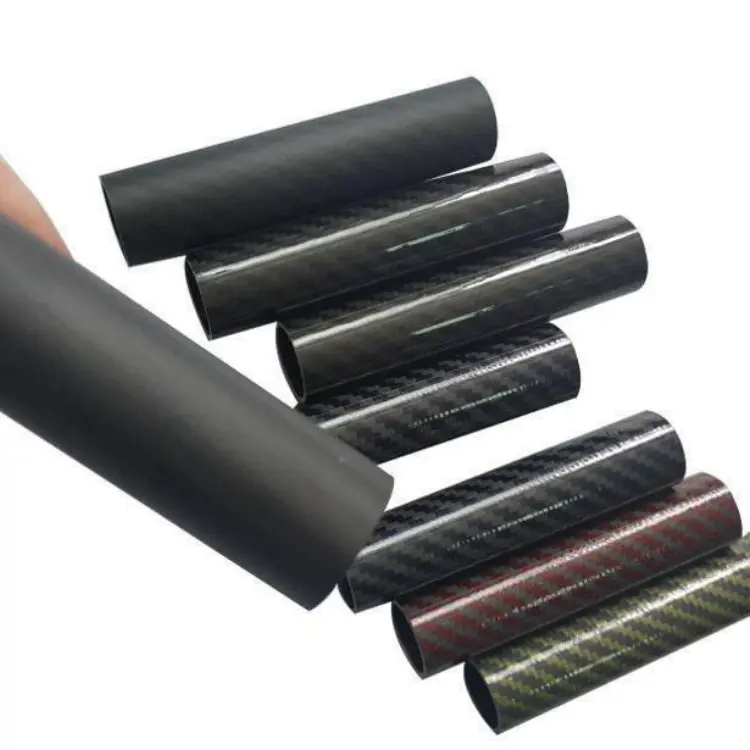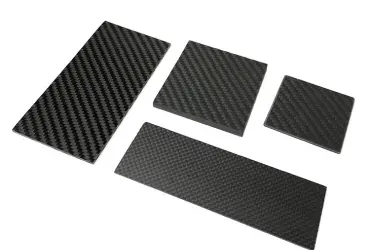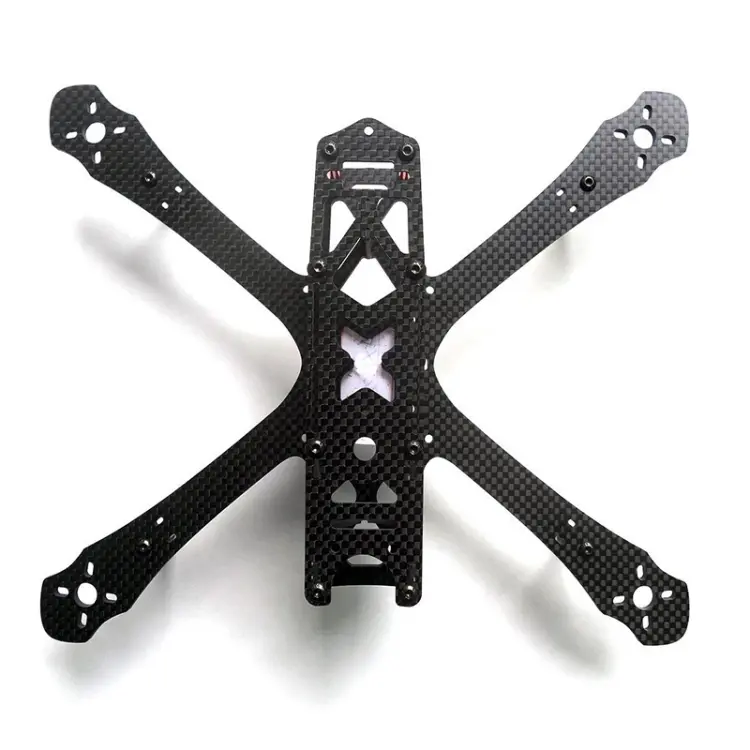 1. Make “light” into performance.
1. Make “light” into performance.
Small carbon tubes save weight and boost performance. They reduce inertia, extend endurance, allow for higher payloads, and enable smaller actuators.
Common alternate names include:
1-inch carbon tube
1-inch carbon fiber tube
1″ carbon fiber tube
25.4 mm CF tube
2-inch carbon fiber tube
2″ carbon tube
50.8 mm carbon tube
2. 1-inch tubes: the backbone of drones and robots.
Field case — 2023 East China Island survey (hexacopter)
Model: Hexacopter, 1.1 m arm span
Arm material: 1-inch × 2 mm epoxy-matrix carbon fiber tube, 1K twill matte finish
Result: Airframe weight reduced by 1.8 kg, payload increased from 2 kg to 4 kg, flight time extended by 18 minutes. Under Beaufort 7 gusts, the arm tip amplitude stayed <0.5 mm, keeping footage stable.
Takeaway: 1-inch carbon tubes (also known as 1″ carbon fiber tubes) bend easily for folding arms. They have a wall thickness of 1.5 mm. Their tensile strength is over 1100 MPa. This gives flight controllers a safety margin.
3. 2-inch tubes: camera booms and marine instrument masts
Field case — 2022 Qingdao Film Studio
Equipment: Motorized telescopic boom, 4.5 m extended length
Main arm: 2-inch × 3 mm carbon fiber tube. It has an internal wiring channel. An external UD prepreg wrap increases torsional stiffness.
Result: Arm mass is 7.4 kg, which is 5 kg lighter than the old aluminum arm. It is also easy to carry by one person. With a 12 kg camera at the tip, static deflection is <2 mm — suitable for stable 4K slow-motion capture.
Field case — 2021 South China Sea ocean buoy platform
Application: 2-inch × 4 mm vinyl-ester carbon tube serves as an instrument mast. It holds an anemometer and an antenna.
Result: Under salt spray at 0.5 mg/(cm²·d) and UV exposure of 150 kcal/cm²·a, the strength after five years stayed above 92%. The bolt holes had no microcracks. The maintenance vessel avoided one hazardous high-reach replacement per year.
Takeaway: 2-inch carbon tubes (50.8 mm) are very stiff. They work great for long cantilevers.
4. What a good tube production record looks like — Hengshui Aohong Technology’s practices.
Aohong sources T700-12K and T800-24K tow fibers. They have annual direct-purchase agreements with suppliers like Toray and Formosa. Each shipment includes a COA; incoming batches undergo interlaminar shear spot checks. We control the fiber volume fraction at 58–62%, and we keep the batch dispersion at ≤ 1.5%.
A hot-melt line produces prepreg “zero bubbles.” It uses online beta-ray control for resin content, with a tolerance of ±1%. Prepregs stay at −18 °C. Before use, they warm up to room temperature for 4 hours. This prevents “sweating” and porosity.
Aohong uses five-axis winding with integrated molding for 1–2-inch diameters. They apply five-axis filament winding and hot-press curing. It has:
0° longitudinal layers: 40%
90° hoop layers: 50%
±45° bias: 10%
This setup balances tensile and circumferential stiffness.
Autoclave at an external pressure of 0.6 MPa. Use continuous laser thermometry. Ensure the degree of cure is 95% or higher.
We do not need any post-bore machining. Cured inner diameters meet h7 tolerance with a surface finish of Ra ≤ 1.6 µm. This process removes the need for boring operations. This preserves fiber integrity and lowers customers’ secondary machining costs.
Surface finish options (“three-piece set”)
1K twill matte: aesthetic components, consumer use.
UD gloss: industrial parts, easier fiber-exposure inspection
Polyurethane weatherproof coating: outdoor grade with a 10-year chalking class 0, ΔE < 1.5.
Per-piece traceability: Each tube comes with a QR code. This connects to the furnace batch number, fiber certificates, interlaminar shear values, and 0° compression modulus. It’s a true “one tube, one certificate” system.
Capacity & Lead Times Aohong runs two 24 m continuous cure ovens. They produce about 1,500 m of 1-inch tubes daily and around 800 m of 2-inch tubes.
Standard sizes ship in 48 hours; non-standard orders take 7–10 days.
 5. Summary & design guidance
5. Summary & design guidance
Use a 1-inch carbon fiber tube when you need a lightweight design and tight folding. Also known as: 1-inch carbon tube, 1″ carbon fiber tube, or 25.4 mm CF tube.
Use a 2-inch carbon fiber tube for high stiffness and long overhangs. Also known as: 2-inch carbon fiber tube, 2″ carbon tube, or 50.8 mm carbon tube.
When you say “weight reduction” in your task brief, choose suppliers that offer traceable fiber lots, verifiable mechanical data, and reliable lead times. This guarantees that “light” is built into the product, not advertised.
Engineers and procurement teams seeking reliable performance should consider carbon fiber tubes. The 1-inch and 2-inch options come from a traceable supply chain. This ensures that the lightweight design delivers measurable results.
Carbon Fiber Tubes Manufacturing Guide
Keyword variations to include on pages or metadata.
carbon fiber tube, 1 inch
1-inch carbon tube
1″ carbon fiber tube
25.4 mm carbon tube
carbon fiber tube, 2 inches
2-inch carbon fiber tube
2″ carbon tube
50.8 mm CF tube
carbon fiber rod, 2 inches

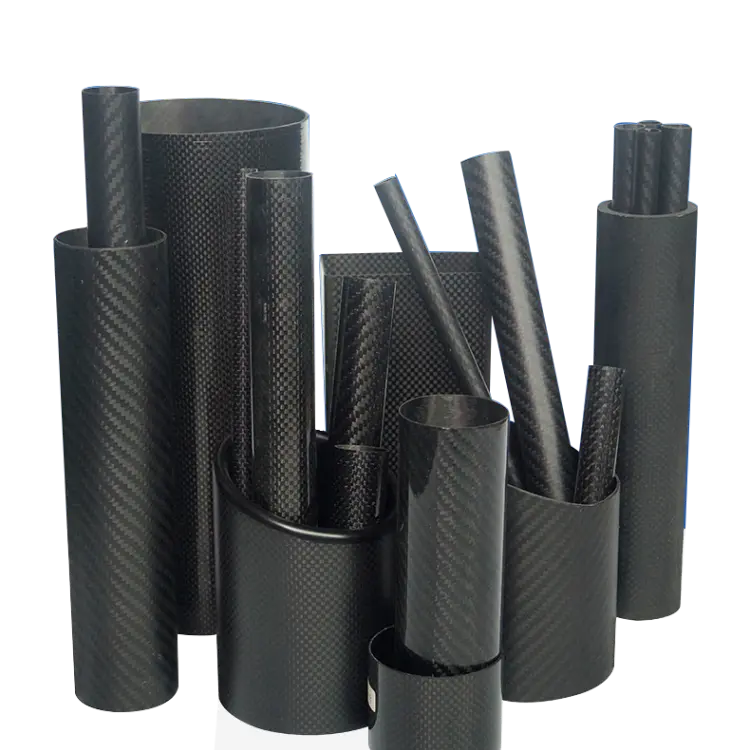 1. Make “light” into performance.
1. Make “light” into performance.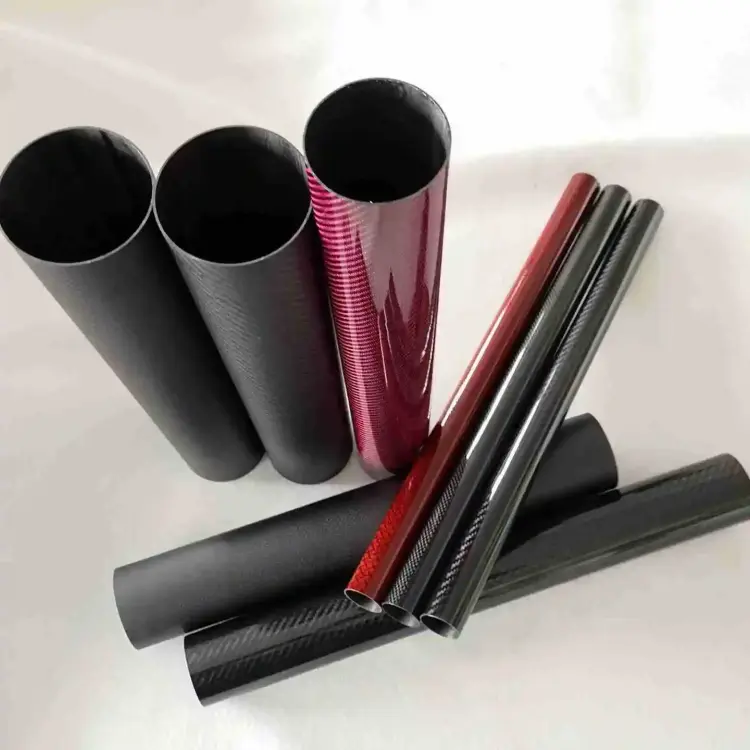 5. Summary & design guidance
5. Summary & design guidance